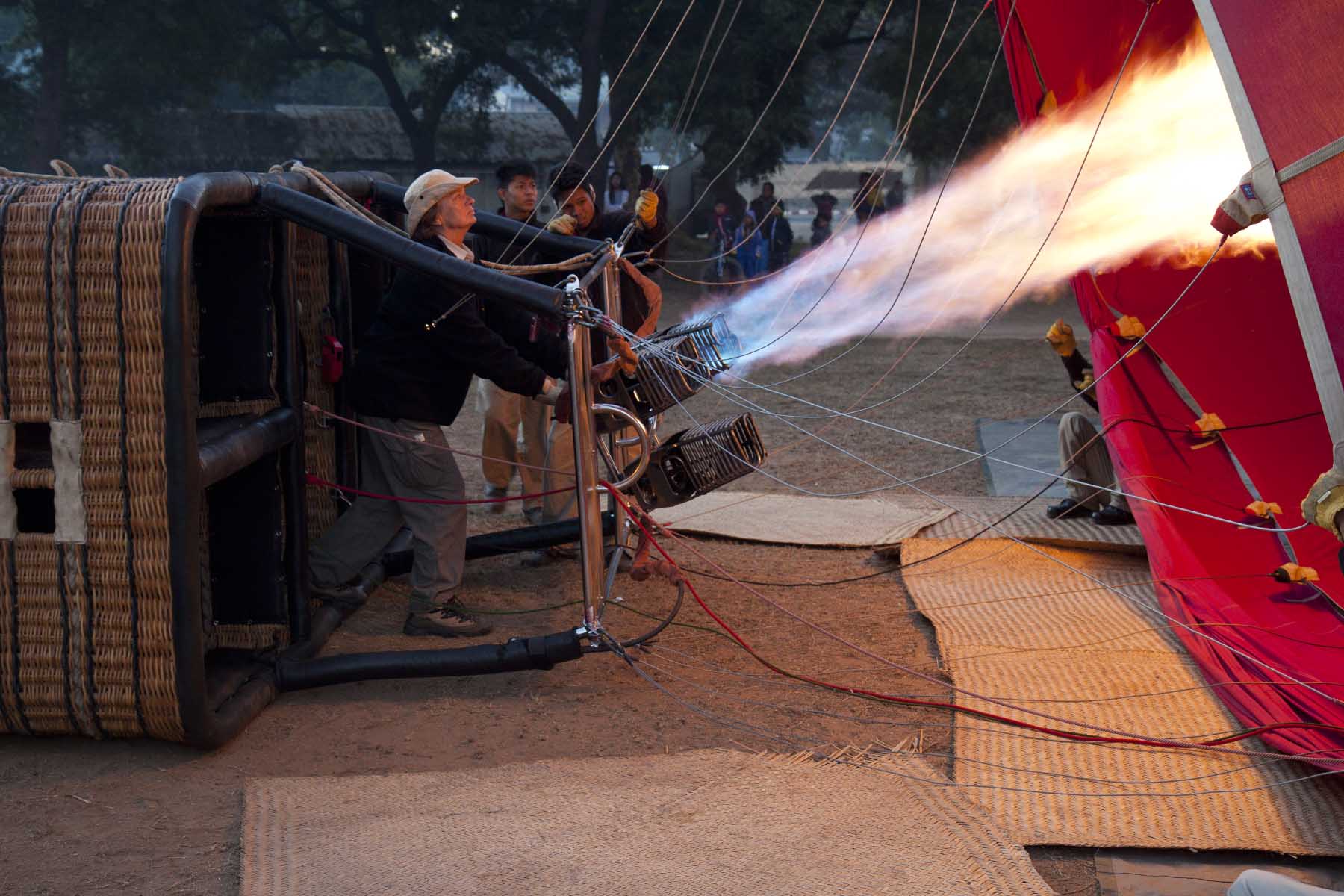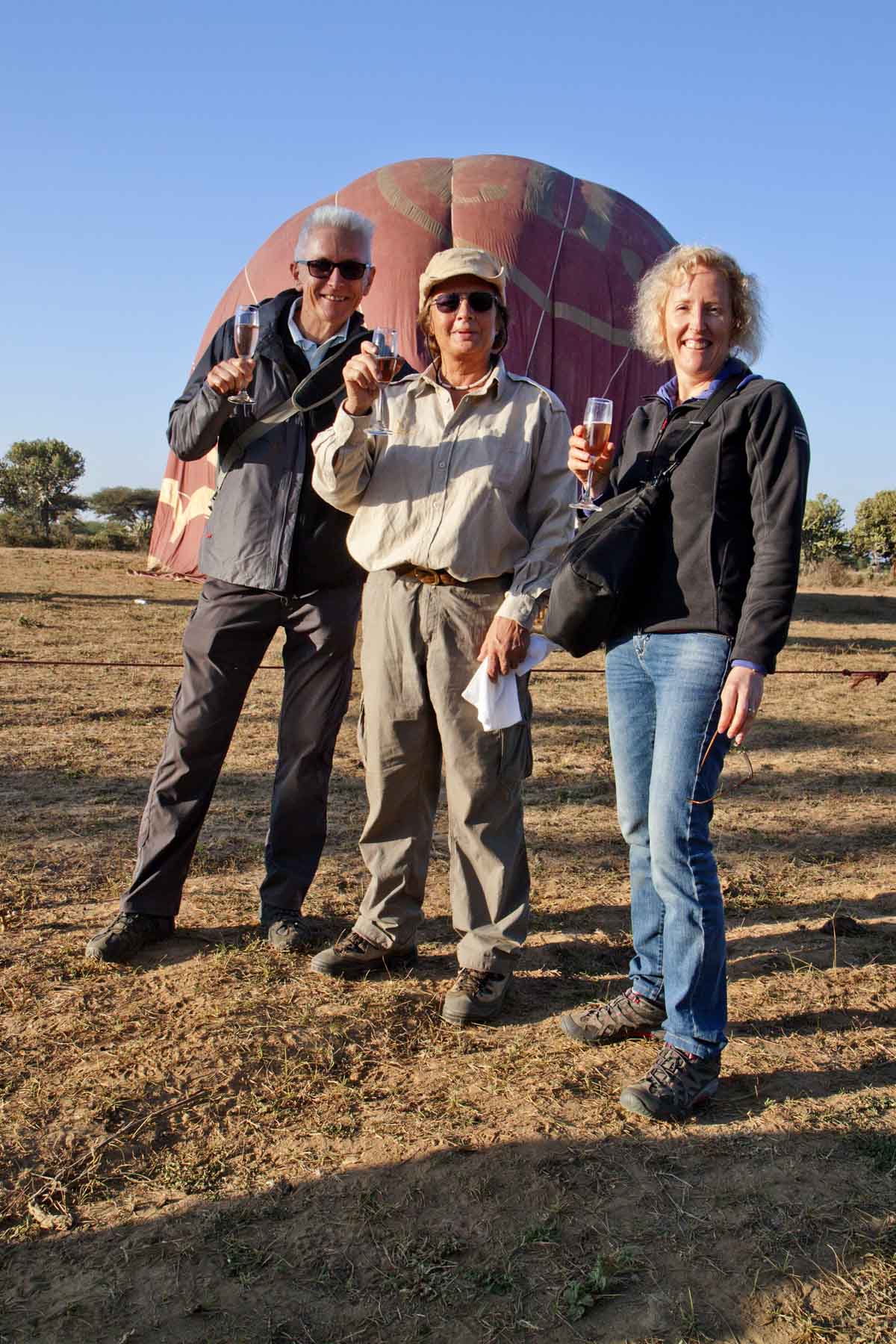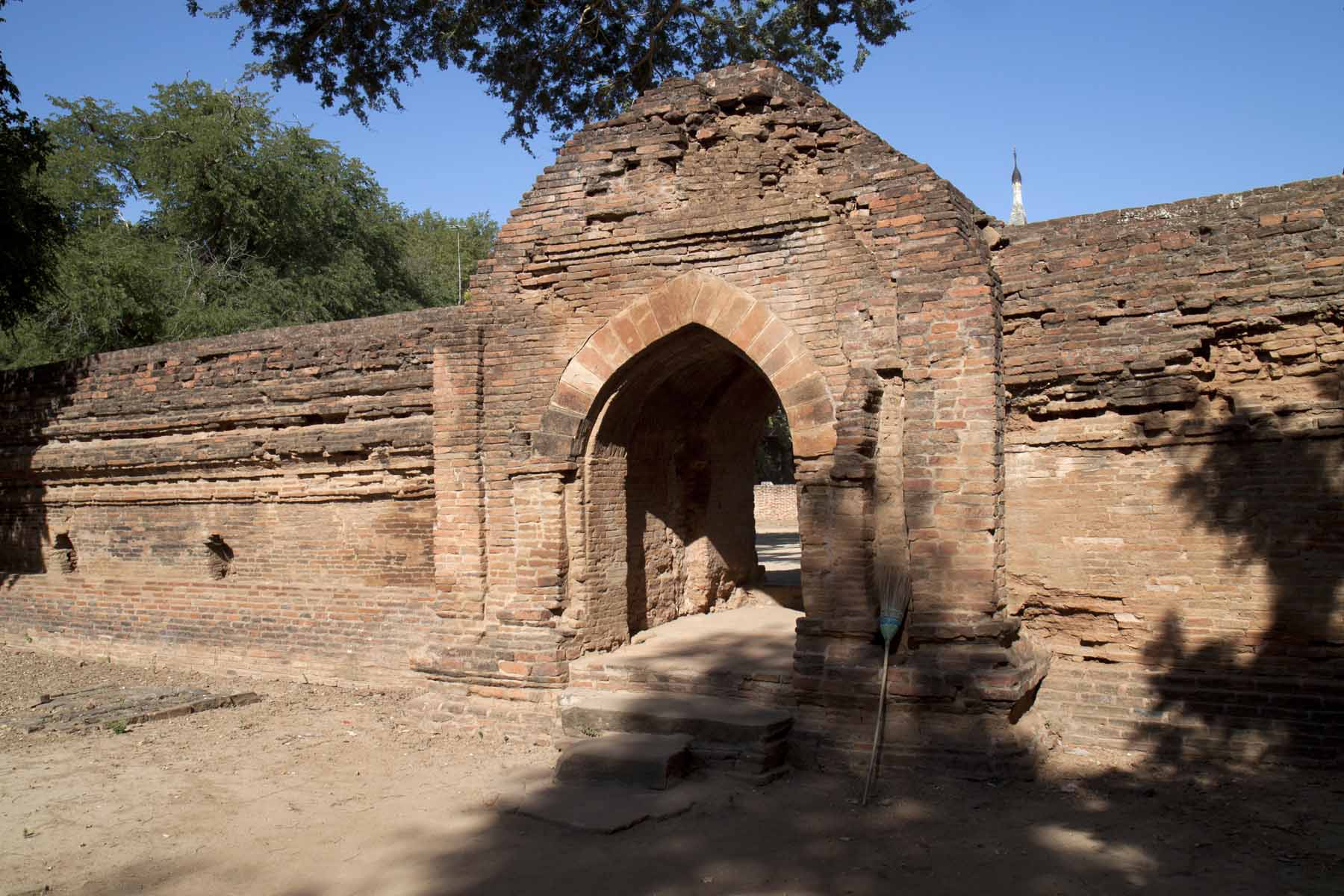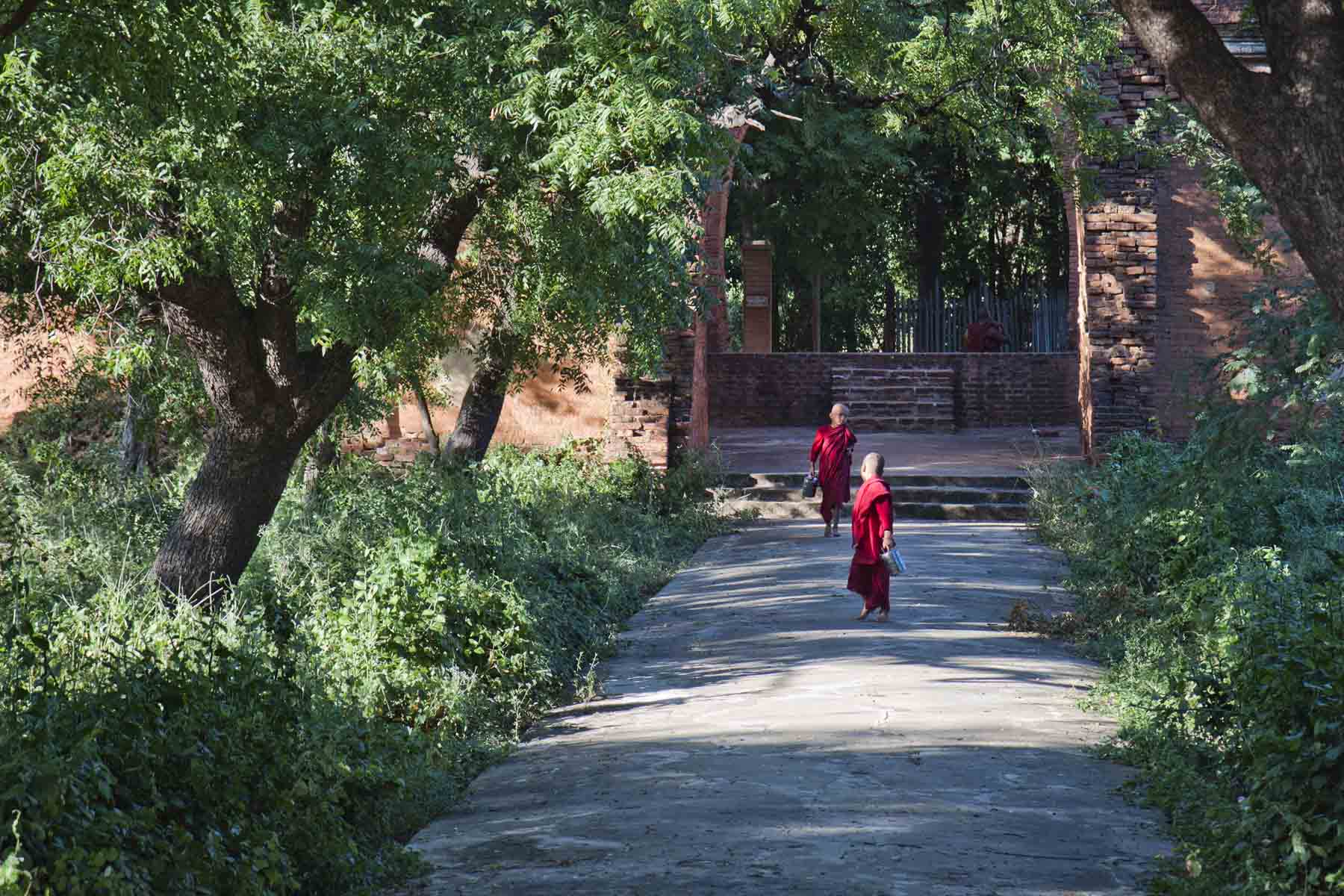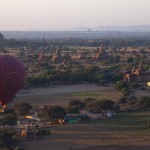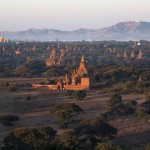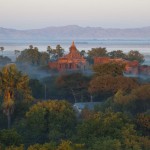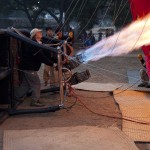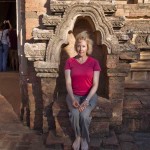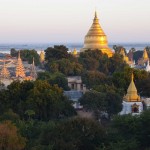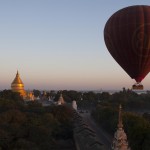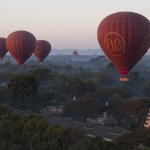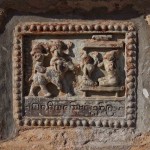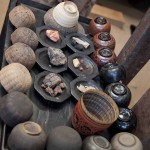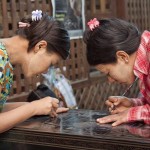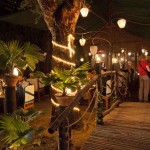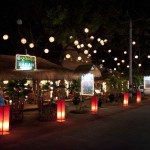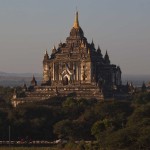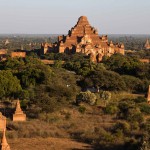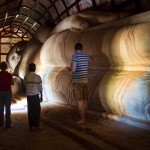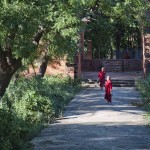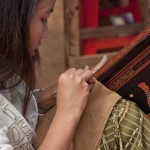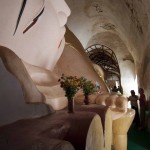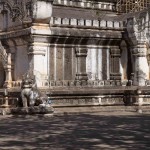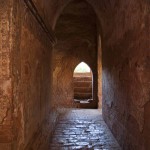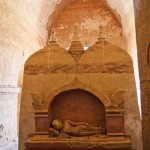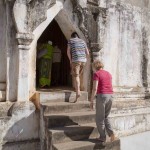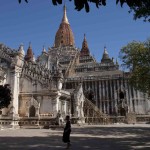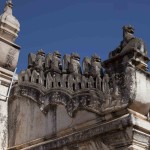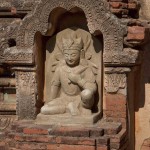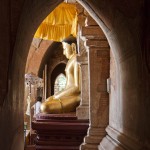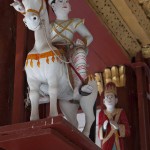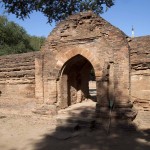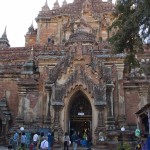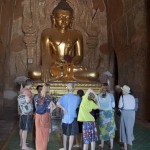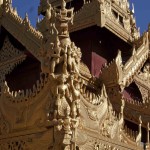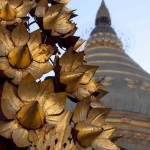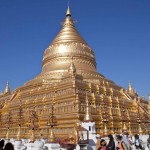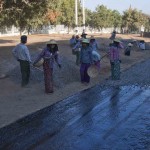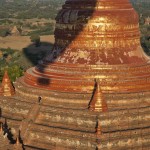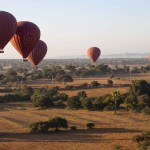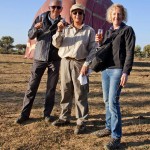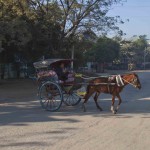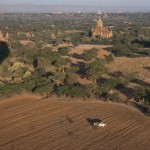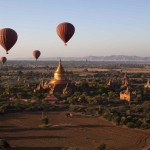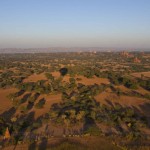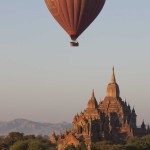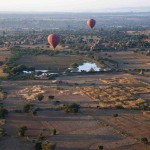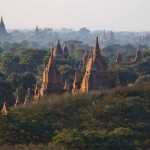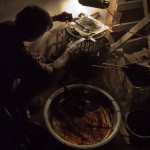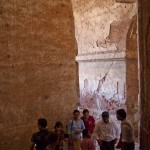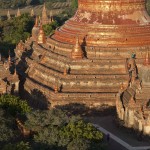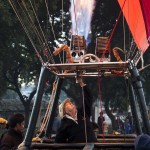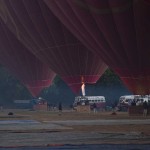Today was an exciting first for both of us – our first hot air balloon ride; and for that ride to be gliding above the temples of Bagan, Myanmar, was simply perfect! Our pick up at 5:40am was in a vintage 1950s bus, which, while very bumpy, was the perfect setting of the scene for us.
Everything about Balloons Over Bagan instilled confidence – it was all managed and presented so competently and professionally, in every tiny way. The company is owned by a Brit, and the all the balloons, the pilots and even the safety standards are British! When we arrived at the oval, all was unfolding with precision as we watched the preparation of the balloons and baskets while imbibing welcoming hot tea, coffee and biscuits, which was then followed by our safety talk and the issuing of clear procedural instructions for all passengers.
Our pilot’s name was Sue, and she imbued us all with confidence and a feeling of safety, simply because she exuded it. They do employ many locals on the ground as drivers and crew, and they were also incredibly focused, organised and energetic – especially when moving vehicles and other obstacles out of the way of a safe landing! Sue executed a very tricky and impressive landing in a tiny patch of clear ground – masterful work! – and then we all had champagne, homemade banana cake and croissants while posing for a photo-op!
The journey itself was terribly exciting – but not in a gung-ho, risk-taking, scary, thrill-seeker way (some reviews on Tripadvisor have complained that it was all too tame). But the sheer beauty and magic of the experience has not been matched by anything I have ever done before. I was aware of holding my breath as the sun peaked over the horizon and splashed its rays on the reds and oranges of the temples, everything turned a deep glowing gold. The spectacular visage of the many vibrant pagodas had a surprisingly delightful support act in the farmers and villagers going about their morning, all sunkissed and smiling, waving at us hanging over the edges of our baskets, our arms flapping like exited 5 year olds.
This was the perfect time of year for ballooning in Bagan, the winds that gently guide the vessels along a similar line as the river, kept us going at a fairly sedate pace. This gave us all plenty of time to savour every moment and every site. Because it was winter, we were able to fly nice and low, which was ideal for close up inspections of the glorious and majestic temples. While this is my first balloon ride, I doubt that this journey will be topped by any of the future rides I certainly intend to take – everything about it was just sublime.
After our euphoric dawn experience, we were collected from our hotel by our Bagan guide, Kyai (pronounced ‘Chai’). He was a very charming man with a great sense of humour and an excellent knowledge of the temples of Bagan. I tell you what, I know a lot of energetic (and, lets face it, younger) people are happy to borrow the push bikes provided by the hotel, or even hire motorbikes, and brave the rather extensive layout of pagodas in the heat, but we crammed as much as we could into our one full day in Bagan by touring in a very swish airconditioned van – one that even had one bench seat reversed so the four of us could face each other and chat like we were in a limo! Just one tip – with this many temples to visit, make sure you wear shoes/sandals that are easy to remove and put on again – just saying!
We kicked off with the superb Shwezigon Paya at the western end of the Nyaung U area. This gorgeous gilded pagoda had us awestruck at dawn when viewed from our floating wicker basket; but it’s beauty was just as striking from the ground as our necks craned upwards, and our gazes followed the blinding gold up past the gargoyles guarding the corners of the pyramid to the pointed spire at the pinnacle.
Kyansittha Umin, also in the Nyaung U area, was a marked contrast to its neighbour, Shwezigon Paya. This cave temple dates from 1057, and its dimly lit corridors are decorated with wonderfully detailed frescoes – you can even see the 700 year old brush strokes (unfortunately, not easily captured by camera – especially with pushy tourists elbowing past in the narrow corridors). Our pocket torches came in handy negotiating the uneven floors and low door frames in the near darkness, so there was a minimum amount of toe stubbing from Nic and head bumping from John.
The 13th century Htilominlo Paya (built 1211-18), bears some beautiful glazed ceramic decoration around the striking terraced design, and some of the original white stucco remains on the lower levels. The four gold Buddhas inside make it worth the effort to run the gauntlet of the insistent vendors on the approach to the temple.
Ananda Paya is one of the big draw cards in this vast sea of temples. Its golden shimmering corncob sitting atop a still white stucco base is unique in the landscape, and is one of the best preserved of all these payas. Because of its popularity, however, it is also one of the most heavily guarded by the hawkers, and it can be quite and ordeal to get past – just don’t make eye contact, and KEEP WALKING!
Dhammayangi Paya is one of the most impressive and probably the most infamous of Bagan’s temples. Cruel (and mad!) King Narathu had the hands of bricklayers cut off who left more than a needle’s width between bricks, and then had the architects executed once the building was completed – he wanted perfection, and he didn’t want it copied by anyone else! What an evil bastard!
Manuha Paya was one of quirkiest temples we visited, named after a king who was help captive here by King Anawrahta. The front three rooms contain oversized Buddhas, supposedly representing the stress and discomfort experienced by the king in his captivity. But just walking into the rooms gives the visitor an almost overwhelming sense of claustrophobia. The final room at the back with a reclining Buddha has the same ‘squished in’ look and feel, even though he is sporting a serene smile as he departs this earthly realm for a heavenly one!
We had a rest from our temple visits with an educational excursion of another sort. We visited the workshop of ‘Maung Aung Myin Traditional Lacquer Ware Artist’. The current owner is 4th generation in the business, and takes great pride in the reputation of his company and its tradition. It’s a hard line of business, for the actual workers, I mean. Only young girls have the skill, steady hands and impeccable eyesight necessary for such fine detail. To be the guy in the cellar squatting for hours, melting the resin to produce lacquer would not be much fun either (and there are many, many layers to the process in such a reputable and fine lacquer artisan ‘house’ as this). We saw an exquisite (and huge!) dresser that was commissioned by a foreigner. It took a year and a half to make and cost the customer £10,000! And it would have been truly back-breaking work lugging it up and down the cellar stairs for its curing periods! The 10 grand number was beyond our means, so we left with a simple, yet beautiful, small box with a peacock on it – each surface meticulously engraved and lacquered with the detail of 4 colours. Lovely.
Mingalazedi Paya (meaning Blessing Stupa) is a 1061 temple crowned with a gigantic bell-like dome. Each entrance is adorned with beautiful glazed tiles, and while most of them have been stolen or defaced over time, there are still 561 remaining, some in excellent condition.
Sulamani Paya is known as the Crowning Jewel, constructed around 1181 and surrounded by lush gardens – the perfect place to rest for a spell in the afternoon heat. It’s also a pertinent reminder to see the monks going about their daily rituals, the temples playing an active role in their worship, despite the pressing vendors also trying to go about their own daily rituals!
Shwesandaw Paya is THE spot in Bagan for sunset (the name means ‘golden holy hair’ – thanks to the legend that it houses one of Buddha’s strands). The graceful white pyramid is 5 staircases high and provides a prime viewing point for the rest of the plane and its glorious monuments. It also provides a prime ‘stairmaster’ work out at the end of a long day with many, many climbs preceding it! There is also another reclining Buddha of sandstone in smaller temple ‘out the back.’
We took a taxi to Aroma 2 Indian Restaurant in Nyaung U, with its catch phrase blazoned across the top of the sign out front – ‘you no like, you no pay’. And we paid! It was hot and spicy and very tasty, and above all – cheap! No complaints here. After such a very full day with its early start, we found an early finish was in order. Bed beckoned, but only after a shower to make short work of the much accumulated dust of our day at the temples of Bagan.
Our travel agent on this trip was Kyaw Khaing at One Stop Myanmar. He handled all of our internal flights, transfers and tours. We were very impressed with his efficiency, helpfulness, excellent advice, friendliness and price!
Click on any image below to view as a gallery
- Balloons and temples, the perfect way to see this part of the world
- The temples of Bagan
- Temples in the mist
- Pilot Sue, from Balloons Over Bagan
- Nic in a niche, trying to look serene, but failing thanks to the wind-tossed locks!
- Shwezigon Paya
- Shwezigon Paya from the air
- Airborne in Bagan
- Glazed tile at Mingalazedi Paya
- The many stages of creating a lacquer bowl (anti clockwise from top)
- You can see why only the young have eyesight good enough for this job
- Aroma 2 Indian Restaurant in Nyaung U, Bagan
- The restaurant strip in Nyaung U, Bagan
- The view of Thatbyinnyu Temple from Shwesandaw
- The special light of sunset begins from atop the Shwesandaw Paya
- Sandstone reclining Buddha at Shwesandaw Paya
- Monks and garden paths at Sulamani Paya
- Fine, detailed work in the lacquer workshop
- The claustrophobic reclining Buddha in the Manuha Paya
- Corner of Ananda Paya
- An eerie corridor in Dhammayangi Paya
- Peaceful sleep in a ‘perfect’ temple
- The entrance to Manuha Paya – with no hint of relatively tiny space beyond
- Ananda Paya, from a peaceful shaded spot at the back – away from the persistent hawkers!
- Gargoyled roof and corncobbed dome of Ananda Paya
- Niche at Htilominlo Pahto
- One of the 4 gold Buddhas of Htilominlo Pahto
- The Buddha Prince, off on his journey of the ‘chosen one’
- Gated entrance to Kyansittha Umin
- Htilominlo Pahto
- Gold Buddha of Htilominlo Pahto and admirers
- Golden detail of Shwezigon Paya
- Golden leaf detail of Shwezigon Paya
- Shwezigon Paya, Bagan
- Road works in Bagan
- You can see from the balloon’s shadow how close we get to the temples – early morning tourists climbing to the top are not fazed at all!
- Moving in for landing
- John, Pilot Sue, Nic and champagne – a safe landing always deserves a celebration!
- For some, it still seems too early!
- Cart and oxen from the air
- The perfect balloon, temple, Bagan shot
- Panorama, balloon and shadow
- Prettiness tenfold!
- The last early rays of the sunrise
- Relatively up close and personal with a temple
- The guy in the cellar melting resin to produce lacquer
- People listening to their guide inside Dhammayangi Paya
- Up close and personal with a temple, Myanmar
- Sue, our pilot, in action
- Getting ready with Balloons Over Bagan, Myanmar

